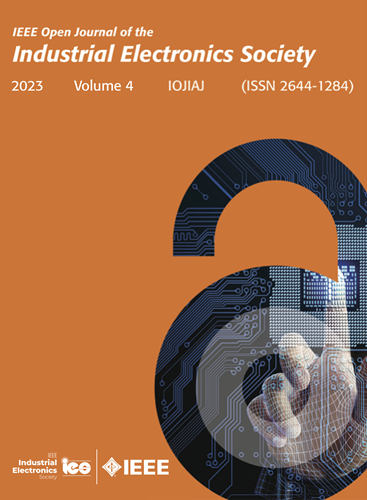Modified Dynamic Movement Primitives With Control: A Novel Trajectory Planning Framework for Dual-Arm Asynchronous Tasks
IF 7.2
1区 工程技术
Q1 AUTOMATION & CONTROL SYSTEMS
引用次数: 0
Abstract
In industrial environments, such as pharmaceutical applications, dual-arm asynchronous cooperation is essential for precise temporal and spatial coordination, particularly in tasks like handling liquid. Using dynamic movement primitives (DMPs), we establish separate DMPs models for each arm, with synchronization achieved through a shared canonical system. However, the original DMPs framework often struggles to accurately reproduce trajectory shapes and achieve endpoint precision, which is crucial in delicate tasks like liquid handling. To address these limitations, we propose a novel framework that integrates DMPs with model predictive control (MPC) to enhance the precision and reliability of dual-arm asynchronous tasks. Our approach introduces an MPC-generated coupling term within the DMPs formulation, continuously optimizing both trajectory shape and endpoint accuracy. The proposed method was validated in six numerical experiments, demonstrating an average improvement of 81.37% in dual-arm endpoint position error control efficiency compared to the original DMPs approaches. Finally, real-world validation using two ABB GoFa CRB 15 000 robots demonstrated the effectiveness of the framework in executing precise liquid handling tasks in industrial settings.带控制的改进动态运动原语:一种新的双臂异步任务轨迹规划框架
在工业环境中,例如制药应用,双臂异步合作对于精确的时间和空间协调至关重要,特别是在处理液体等任务中。使用动态运动原语(dmp),我们为每个手臂建立了单独的dmp模型,并通过共享的规范系统实现同步。然而,原始的dmp框架通常难以准确地再现轨迹形状并达到终点精度,这在液体处理等复杂任务中至关重要。为了解决这些限制,我们提出了一个新的框架,将dmp与模型预测控制(MPC)集成在一起,以提高双臂异步任务的精度和可靠性。我们的方法在dmp公式中引入了mpc生成的耦合项,不断优化轨迹形状和端点精度。通过6个数值实验验证了该方法的有效性,结果表明,与原始dmp方法相比,双臂端点位置误差控制效率平均提高了81.37%。最后,使用两台ABB GoFa CRB 15000机器人进行了实际验证,证明了该框架在工业环境中执行精确液体处理任务的有效性。
本文章由计算机程序翻译,如有差异,请以英文原文为准。
求助全文
约1分钟内获得全文
求助全文
来源期刊

IEEE Transactions on Industrial Electronics
工程技术-工程:电子与电气
CiteScore
16.80
自引率
9.10%
发文量
1396
审稿时长
6.3 months
期刊介绍:
Journal Name: IEEE Transactions on Industrial Electronics
Publication Frequency: Monthly
Scope:
The scope of IEEE Transactions on Industrial Electronics encompasses the following areas:
Applications of electronics, controls, and communications in industrial and manufacturing systems and processes.
Power electronics and drive control techniques.
System control and signal processing.
Fault detection and diagnosis.
Power systems.
Instrumentation, measurement, and testing.
Modeling and simulation.
Motion control.
Robotics.
Sensors and actuators.
Implementation of neural networks, fuzzy logic, and artificial intelligence in industrial systems.
Factory automation.
Communication and computer networks.
 求助内容:
求助内容: 应助结果提醒方式:
应助结果提醒方式:


